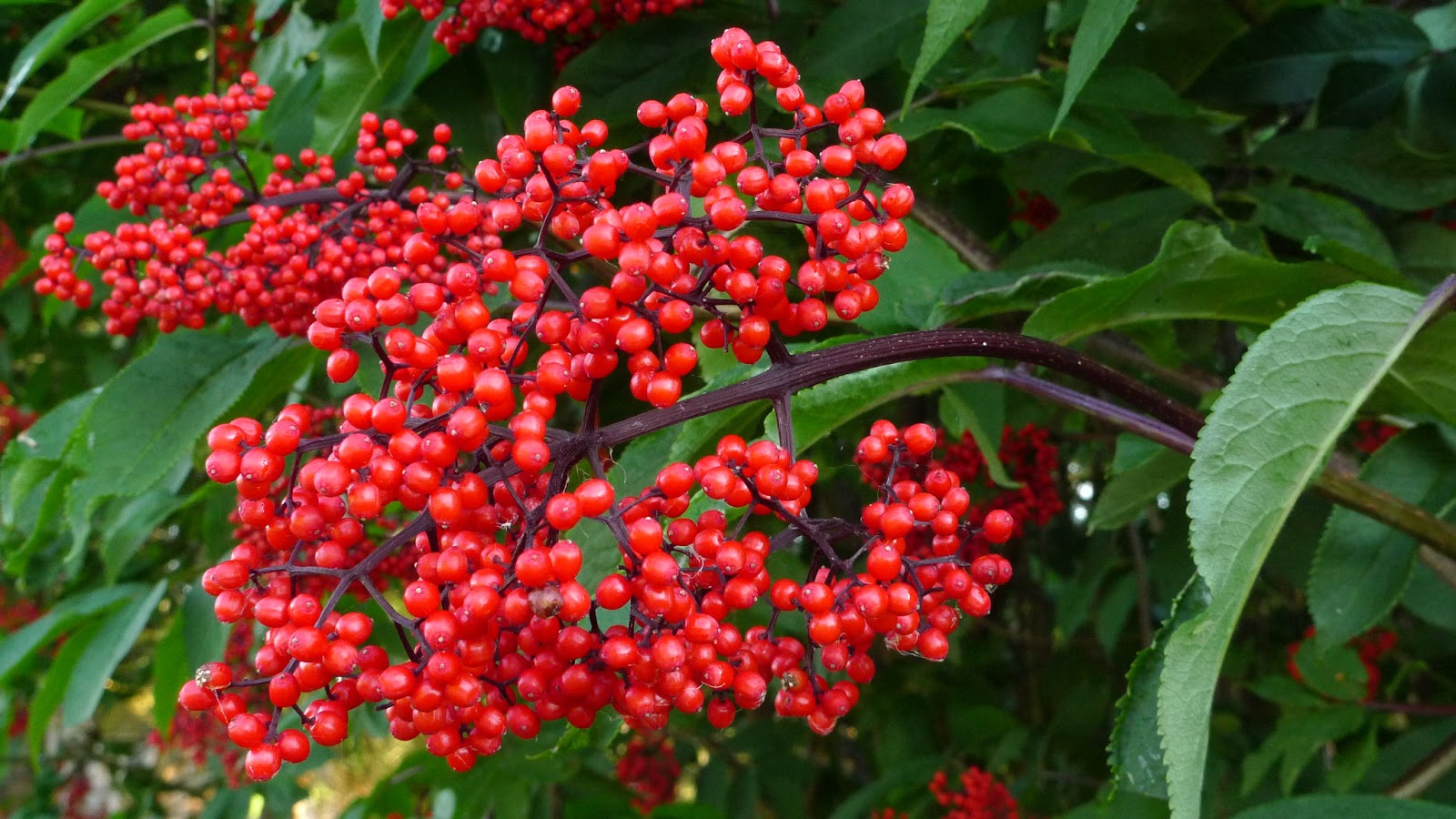
Red elderberry, scientifically known as Sambucus racemosa, is a striking shrub that graces the landscapes of North America with its vibrant red berries and delicate, cream-colored flowers. This resilient plant has long been revered for its ecological significance and traditional uses by indigenous communities. In this article, we will delve into 18 fascinating facts about the red elderberry, exploring its botanical characteristics, ecological role, cultural significance, and potential benefits. From its role as a wildlife magnet to its historical uses in traditional medicine, the red elderberry stands as a testament to the intricate relationship between plants and the natural world. Join us on a journey through the enchanting world of red elderberries as we uncover the captivating details that make this plant a cherished and valuable component of its ecosystem.
Key Takeaways:
- The Red Elderberry, a vibrant shrub native to North America, supports wildlife and biodiversity through its bright red berries and fragrant flowers, contributing to the intricate web of forest interactions.
- While the Red Elderberry’s toxic berries have historical and cultural significance, its ornamental value and potential for sustainable harvesting practices inspire a deeper appreciation for the wonders of the natural world.
The Red Elderberry: A Fascinating Plant of the Forest
The Red Elderberry, scientifically known as Sambucus racemosa, is a captivating plant that holds numerous intriguing facts and characteristics. As you explore the enchanting world of this vibrant shrub, you'll uncover a plethora of remarkable details that shed light on its ecological significance and traditional uses.
It's a Deciduous Shrub Native to North America
The Red Elderberry is a deciduous shrub that is native to North America, thriving in various habitats such as forests, woodlands, and even along riverbanks. Its natural range extends from Alaska to California, encompassing parts of Canada and the Rocky Mountains. This wide distribution showcases the adaptability and resilience of the Red Elderberry in diverse environmental conditions.
The Plant Bears Clusters of Bright Red Berries
One of the most striking features of the Red Elderberry is its clusters of bright red berries, which are visually captivating and play a crucial role in the plant's ecosystem. These berries are a rich source of nutrients for wildlife, including birds and small mammals, making the Red Elderberry an essential component of the forest's food web.
Red Elderberry Berries Have Historical and Cultural Significance
Throughout history, various Indigenous communities have utilized Red Elderberry berries for a range of purposes, including medicinal and culinary applications. The berries were traditionally used to create dyes, beverages, and medicinal remedies, highlighting the cultural significance of the Red Elderberry in Indigenous traditions.
It Blooms with Fragrant, Creamy-White Flowers
In the spring, the Red Elderberry graces its surroundings with elegant, creamy-white flowers that emit a sweet and fragrant aroma. These blossoms not only contribute to the plant's aesthetic appeal but also serve as a vital nectar source for pollinators such as bees and butterflies, facilitating the process of pollination in the forest ecosystem.
Red Elderberry Leaves are Pinnately Compound
The leaves of the Red Elderberry are pinnately compound, featuring multiple leaflets arranged along a central stem. This distinctive leaf structure enhances the Red Elderberry's ability to capture sunlight and carry out photosynthesis efficiently, contributing to its overall growth and vitality.
It Plays a Role in Ecological Succession
As a pioneer species, the Red Elderberry plays a pivotal role in ecological succession. It often colonizes disturbed or recovering areas, contributing to soil stabilization and the gradual restoration of the ecosystem. Through its presence, the Red Elderberry sets the stage for the establishment of diverse plant communities, fostering biodiversity in the forest environment.
Red Elderberry Berries Are Toxic When Consumed Raw
While the Red Elderberry berries are a valuable food source for wildlife, it's essential to note that they are toxic to humans when consumed raw. The berries contain cyanogenic glycosides, which can cause gastrointestinal distress and other adverse effects. However, when properly processed and cooked, the berries can be used in various culinary preparations, ensuring their safe consumption.
The Plant Holds Medicinal Properties
In traditional herbal medicine, various parts of the Red Elderberry plant, including the bark, leaves, and flowers, have been used to create herbal remedies. These remedies were employed to address ailments such as colds, fevers, and inflammatory conditions. However, it's crucial to approach the usage of Red Elderberry in herbal medicine with caution due to its toxicity and potential side effects.
Red Elderberry Supports Wildlife and Biodiversity
The Red Elderberry serves as a vital resource for wildlife, offering sustenance to numerous bird species, small mammals, and insects. Its presence contributes to the intricate web of interactions within the forest ecosystem, showcasing the interconnectedness of plant and animal life. By supporting diverse forms of wildlife, the Red Elderberry contributes to the overall biodiversity of its habitat.
It Exhibits Ornamental Value in Landscaping
Beyond its ecological significance, the Red Elderberry holds ornamental value and is often incorporated into landscaping designs. Its vibrant berries, lush foliage, and graceful flowers make it a desirable addition to garden settings, where it can enhance the visual appeal of outdoor spaces while attracting beneficial pollinators.
Red Elderberry Plays a Role in Folklore and Myths
In various cultures, the Red Elderberry has been intertwined with folklore and myths, often symbolizing themes of protection, renewal, and transformation. Its presence in traditional stories and beliefs reflects the profound impact of nature on human imagination and cultural narratives, adding an enchanting layer to the plant's significance.
The Plant Requires Adequate Moisture and Sunlight
The Red Elderberry thrives in moist, well-drained soils and benefits from adequate sunlight for optimal growth and berry production. These environmental requirements shape its distribution within forested areas, where it can be found along stream banks, in open woodlands, and within the understory of diverse ecosystems.
Red Elderberry Is Prone to Pests and Diseases
Like many plant species, the Red Elderberry is susceptible to certain pests and diseases that can impact its health and vitality. Common challenges include aphid infestations, powdery mildew, and scale insects. Understanding and managing these potential threats is essential for maintaining the resilience of Red Elderberry populations.
It Contributes to Forest Regeneration
Through its ecological roles and contributions to the forest ecosystem, the Red Elderberry plays a part in forest regeneration and the ongoing cycle of growth, decay, and renewal. Its presence aids in the restoration of disturbed areas and supports the overall resilience of forested landscapes.
Red Elderberry Is a Valuable Subject for Botanical Studies
Given its ecological significance, cultural history, and botanical characteristics, the Red Elderberry serves as a valuable subject for botanical studies and ecological research. Exploring its interactions with wildlife, its genetic diversity, and its responses to environmental changes provides insights that contribute to broader scientific knowledge and conservation efforts.
The Plant Holds Potential for Sustainable Harvesting Practices
When approached with care and consideration, the Red Elderberry presents opportunities for sustainable harvesting practices that align with ecological stewardship. Responsible harvesting of its berries, coupled with an understanding of traditional uses and ecological impacts, can promote the conservation of this remarkable plant for future generations.
Red Elderberry Encourages Appreciation for Nature's Wonders
In its diverse array of ecological, cultural, and botanical attributes, the Red Elderberry encourages a deeper appreciation for the wonders of the natural world. By delving into its rich tapestry of facts and significance, we gain a glimpse of the intricate connections that shape the beauty and complexity of the forest ecosystem.
As you immerse yourself in the realm of the Red Elderberry, may its vibrant presence and compelling characteristics inspire a sense of wonder and reverence for the remarkable plants that grace our landscapes.
Conclusion
In conclusion, red elderberry is a fascinating plant with a rich history and a multitude of uses. From its vibrant red berries to its ecological importance, this plant has captured the interest of botanists, foragers, and nature enthusiasts alike. Its versatility in traditional medicine, landscaping, and wildlife support makes it a valuable addition to any ecosystem. With proper understanding and respect for its toxic properties, red elderberry can be appreciated for its beauty and contributions to the natural world.
FAQs
Is red elderberry edible?
Red elderberry berries are toxic when raw, but they can be cooked to remove the toxins and used in jams, jellies, and syrups. However, caution should be exercised, and it's advisable to consult with a knowledgeable forager or botanist before consuming them.
Can red elderberry be grown in a home garden?
While red elderberry can be grown in home gardens, it's important to note that the plant has specific soil and moisture requirements. Additionally, its toxic properties should be taken into consideration, especially if there are children or pets in the household. It's best to research and understand the plant's needs thoroughly before attempting to cultivate it.
Was this page helpful?
Our commitment to delivering trustworthy and engaging content is at the heart of what we do. Each fact on our site is contributed by real users like you, bringing a wealth of diverse insights and information. To ensure the highest standards of accuracy and reliability, our dedicated editors meticulously review each submission. This process guarantees that the facts we share are not only fascinating but also credible. Trust in our commitment to quality and authenticity as you explore and learn with us.


